Natural and sustainable
The soft approach
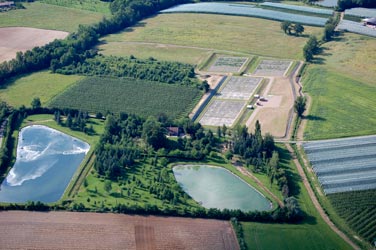 Nègrepelisse remains faithful to its commitment to soft sanitation. The ponds of 1982, the Constructed Wetlands of the wastewater plant of 2009, the Constructed Wetlands and the plantation of the septage plant of 2011 are “extensive” or soft techniques, exploiting natural processes in contrast with the “intensive” or hard techniques using energy-consuming industrial equipment.
Nègrepelisse remains faithful to its commitment to soft sanitation. The ponds of 1982, the Constructed Wetlands of the wastewater plant of 2009, the Constructed Wetlands and the plantation of the septage plant of 2011 are “extensive” or soft techniques, exploiting natural processes in contrast with the “intensive” or hard techniques using energy-consuming industrial equipment.
This choice is not common; the local authorities still often choose intensive techniques beyond 2000 PE, for lack of either information or of objective advice.
An element of comparison: during the contractors’ tendering for the wastewater plant in 2008, CCTVA received four proposals applying the Constructed Wetland technique and two proposals with intensive techniques. The implementation costs were similar for all six proposals; the projected running costs were two times lower for the Constructed Wetland, as very often.
The natural approach
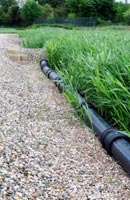 With the Constructed Wetland technique, wastewater or septage is treated on its way through layers of gravel or sand planted with common reed - Phragmites australis.
With the Constructed Wetland technique, wastewater or septage is treated on its way through layers of gravel or sand planted with common reed - Phragmites australis.
The gravel retains the Suspended Solids-SS at its surface and houses the purifying bacteria. The rhizomes or underground reed stems create water routes across the filter, prevent its clogging and stimulate the bacterial activity in their neighbourhood by oxygen and nutriment production. The pollutants pile up above the primary filter in the form of a dry sludge or compost. The filter is aired both from above (every wastewater batch pushes and draws air within the gravel) and from the bottom (by the air circulating in the drainage pipes).
All these phenomena are totally natural.
The sustainable approach
Implementation of Constructed Wetlands imposes the transportation of aggregates, thus a consumption of diesel, a non renewable energy, and an production of Greenhouse Gazes-GHG, but much less than with intensive plants.
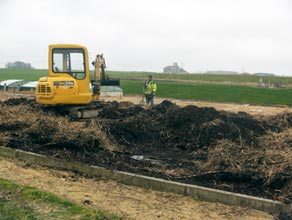 The running of the plant imposes power consumption and a small production of GHG. In Nègrepelisse, the plant power consumption is under 50 000 kWh/year. An intensive plant with the same capacity uses at least ten times more energy and imposes frequent replacements of parts and devices whose manufacture is also energy consuming.
The running of the plant imposes power consumption and a small production of GHG. In Nègrepelisse, the plant power consumption is under 50 000 kWh/year. An intensive plant with the same capacity uses at least ten times more energy and imposes frequent replacements of parts and devices whose manufacture is also energy consuming.
Sludge, unavoidable by-product of any wastewater treatment, forms a compost above the reed bed. This compost is taken away every ten to fifteen years for the wastewater treatment, every five years for the septage treatment, and used as agricultural fertilizer. By comparison, the sludge of an intensive plant is extracted daily, dried by energy-consuming industrial equipment and stored in silos or big capacity halls before disposal.
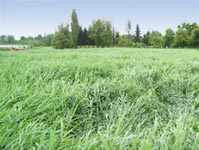
Ecological and landscaped
A study of the plant’s impact on it’s natural environment and on the landscape.
read the article
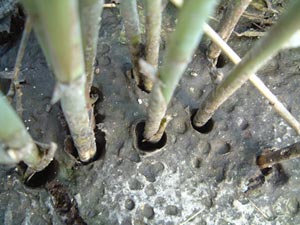
French constructed wetland’s history
The WTP was the biggest French constructed wetland plant when it was constructed.
Read the article